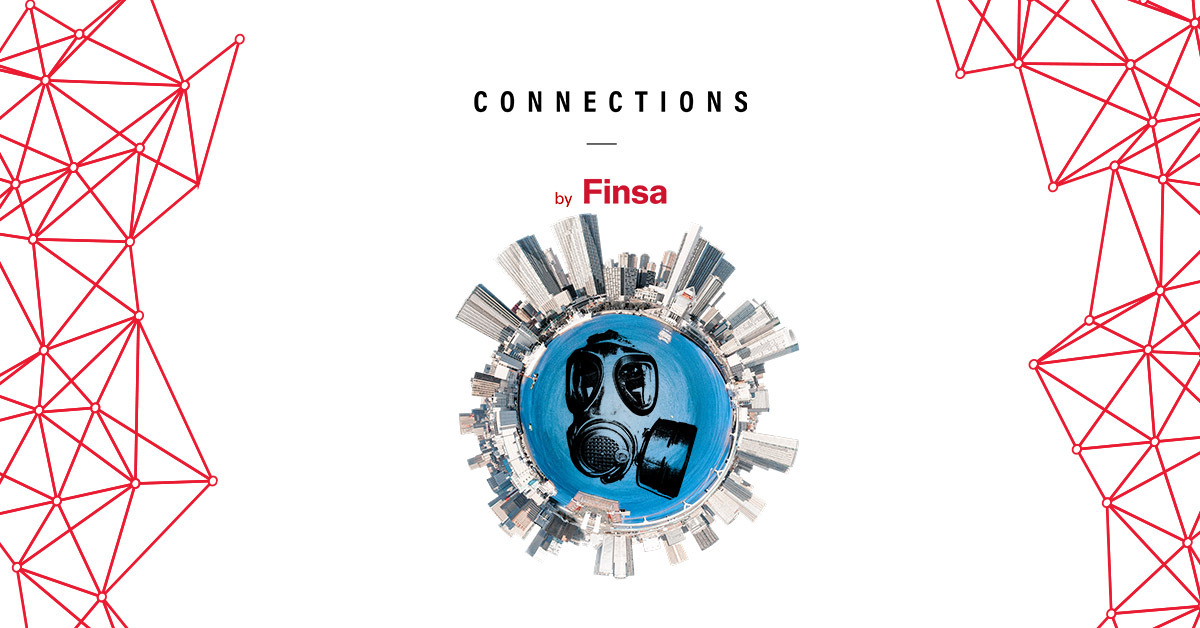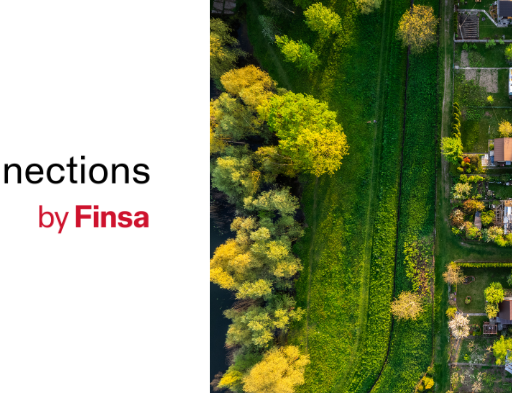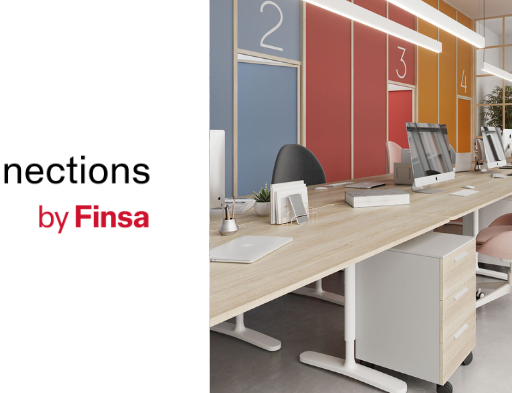The nomadic and digital lifestyle ends up directly influencing the spaces we inhabit. To provide a solution for more or less temporary stays, where flexibility is needed, without giving up a fully equipped home, a new type of living room has emerged: serviced apartments. “City centres are evolving to adapt to more dynamic experiences, allowing people to settle temporarily with ease and without long-term commitments,” explain Noelia Vela and Breno Pinto, designer and architect of Node Living, the entity responsible for Node Carbanchel, the case study that exemplifies this new model.
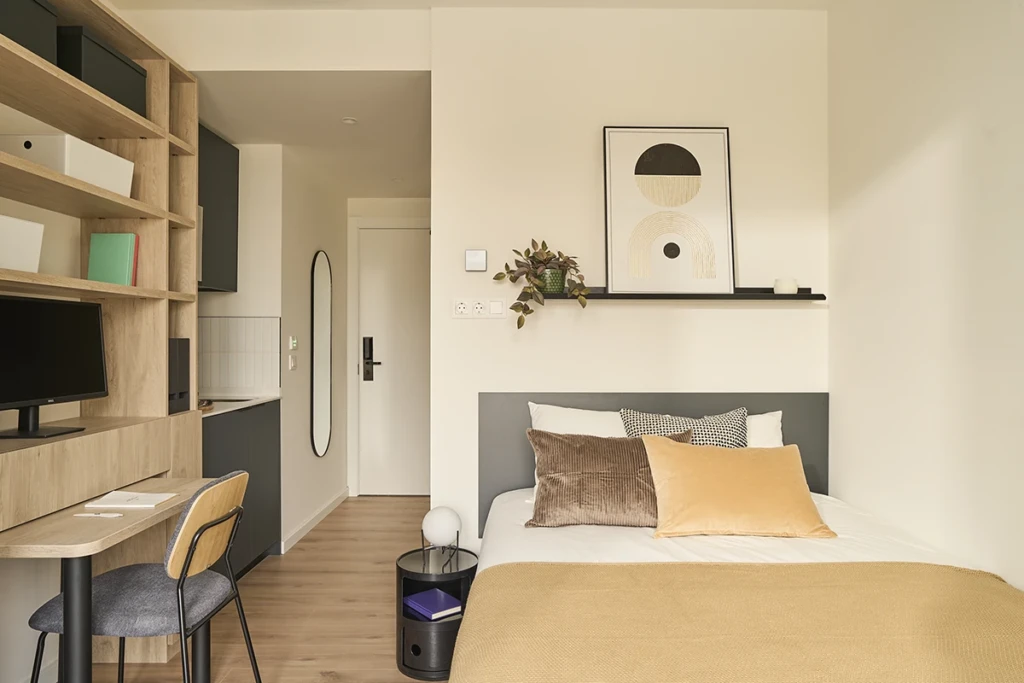
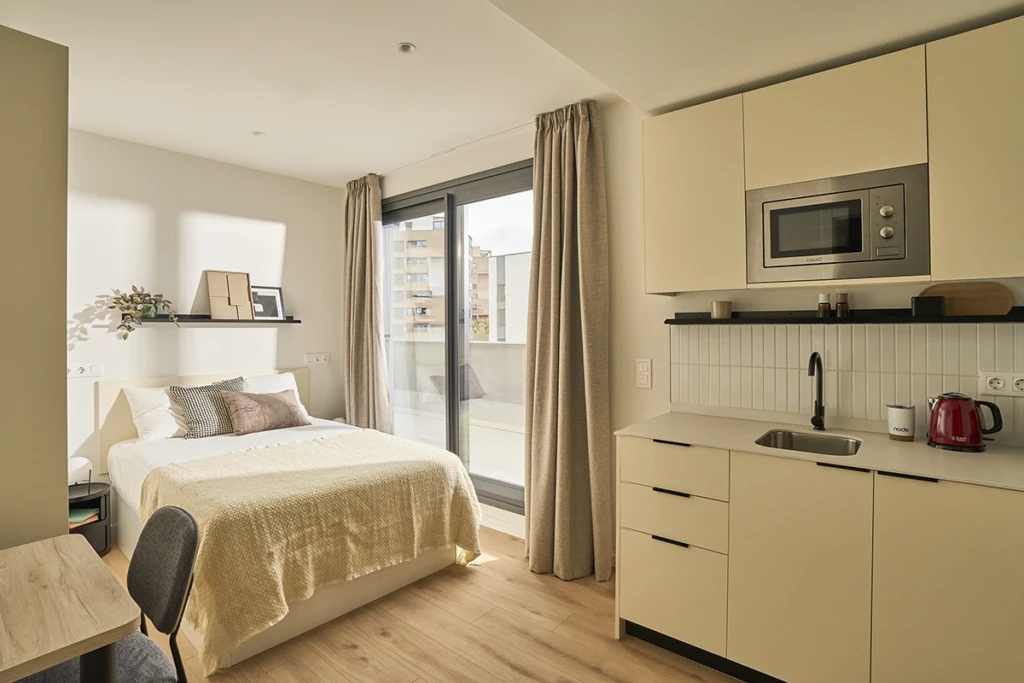
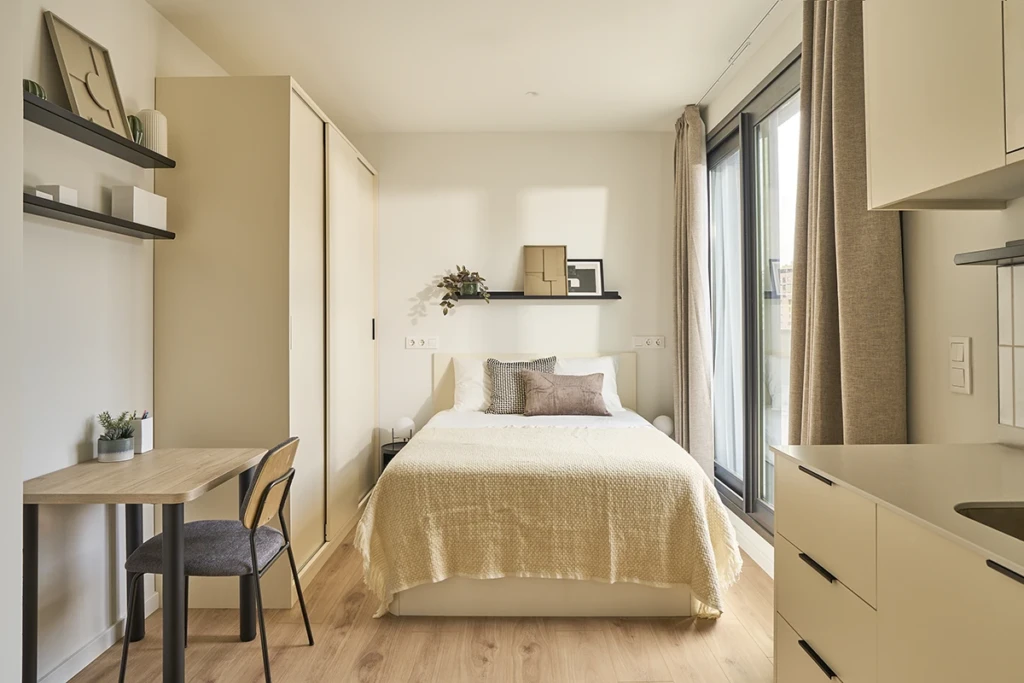
Serviced apartments, a booming living model
The living room sector is evolving “toward greater flexibility, sustainability, and digitalization,” explains Node Living. It’s not just a solution for young professionals and students; entire families also stay in this type of accommodation. Alessandro Baccari, design director of DesignAgency, clarifies that there is “a fusion between the hotel sector and residential housing.” Serviced apartments now offer more avant-garde design environments that bring the experience of a boutique hotel stay into everyday life. They also offer a variety of services and amenities typically associated with hotels and resorts. Apartment living has evolved beyond being just a place to sleep”. Node Carabanchel features communal areas for working and socializing: coworking, a gym, game rooms, gastropubs, patios, and rooftop terraces.
This offer is due to the fact that construction is often carried out in areas far from the urban centre where there are no facilities nearby. This situation creates the need to include these services in projects and thus compensate for these shortcomings in the urban development in which they are located. Even those who only come home to sleep can enjoy time spent with their neighbours or individually in the common areas without leaving the building.
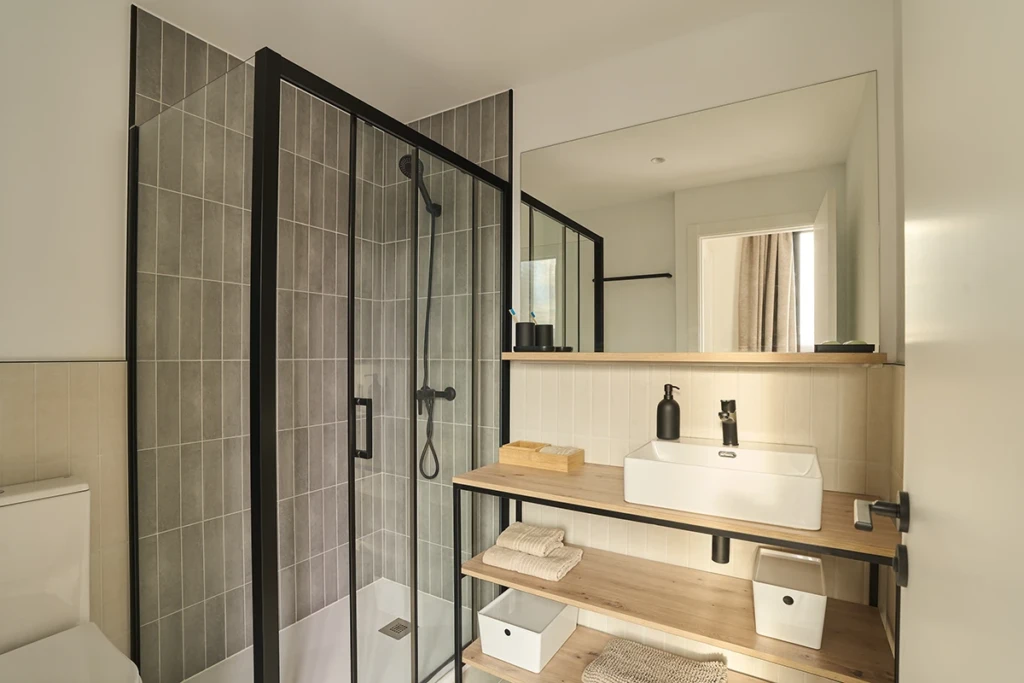
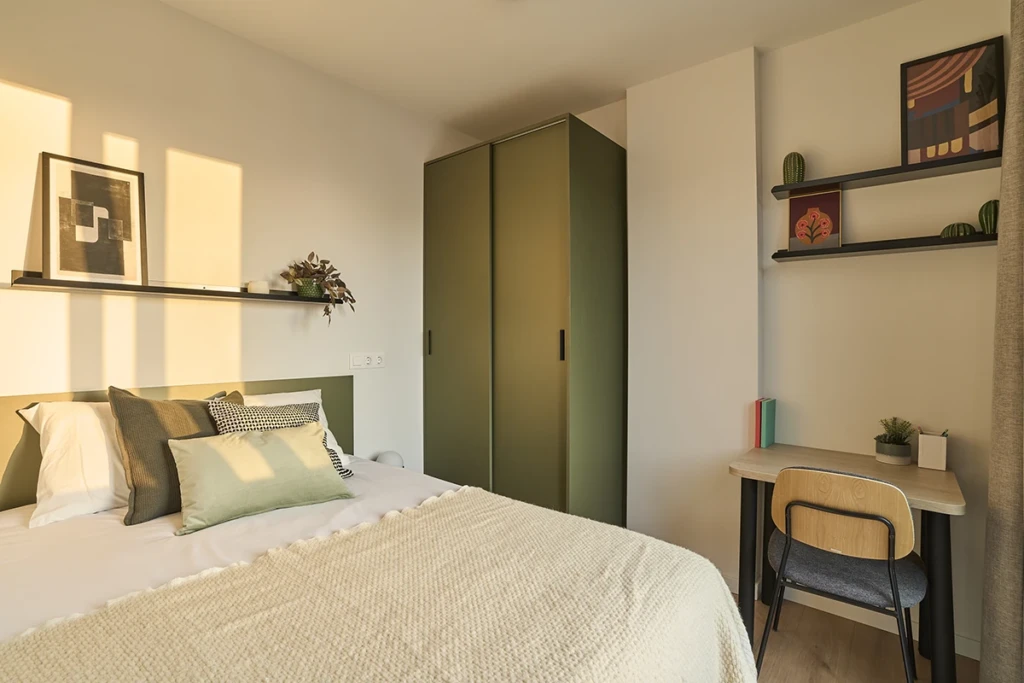
Serviced design keys apartments
At Node Carabanchel, the design focuses “on the essential elements that make the units comfortable and contemporary,” Baccari emphasizes. Among these essential elements are the gardens on the ground floor of the building, as well as a large-scale art installation around the main entrance, “a work of urban art in itself that connects the homes with their surroundings,” he comments.
The interior design required “warm finishes and tones, materials that are more reminiscent of a home than an apartment building,” says Node Living. “These interior design solutions facilitate another fundamental pillar of the project: fostering connections between residents and the spaces they call home, creating a strong sense of connection that extends beyond the accommodation to the surrounding community and neighborhoods,” they conclude.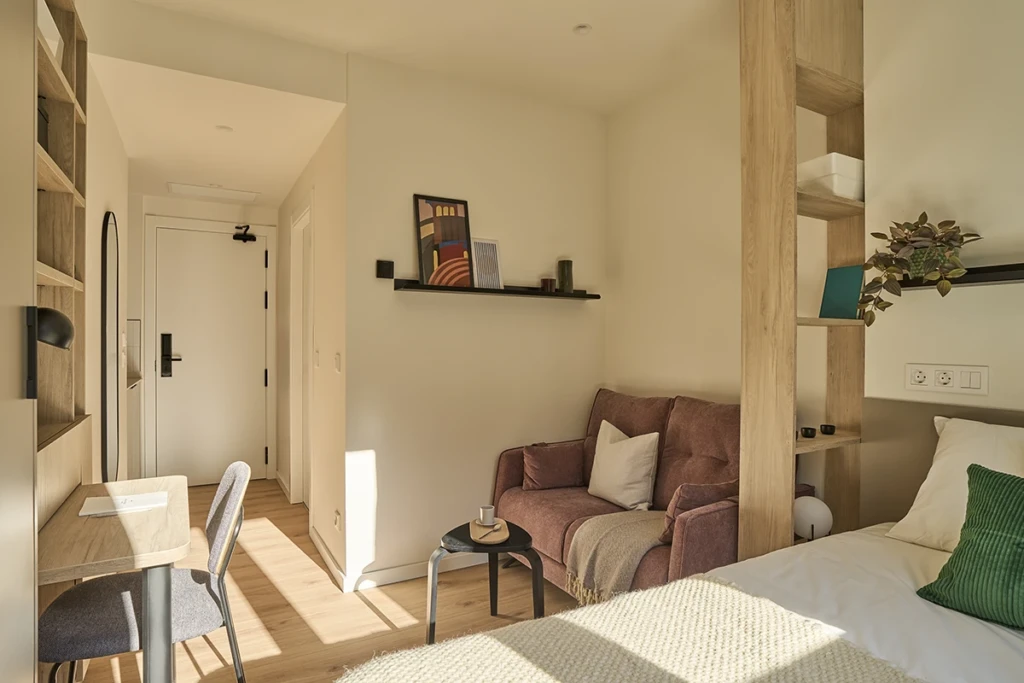
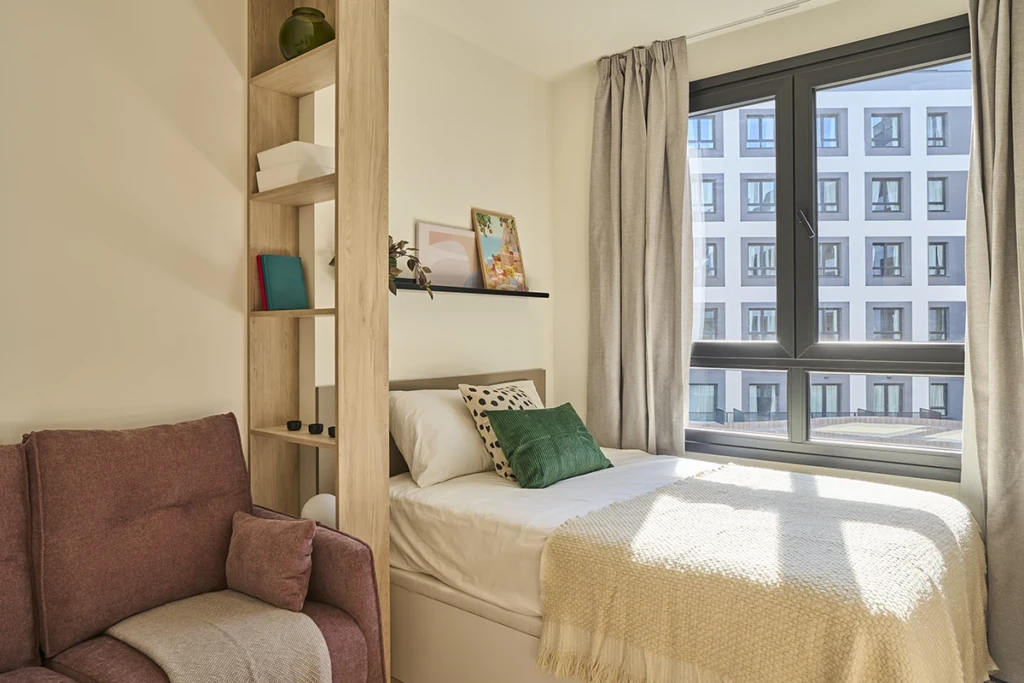
In kitchen modules, fronts, wardrobes, headboards, shelves, desks and bathroom furniture you can find Fimaplast Gris Vesubio Soft III, Marfil Talco Soft III, Mineral Grey Soft III, Verde Oliva Soft III, Blanco Polar Soft III, Roble Aurora Atlas, Moisture Resistant Blanco Medio Soft III.


